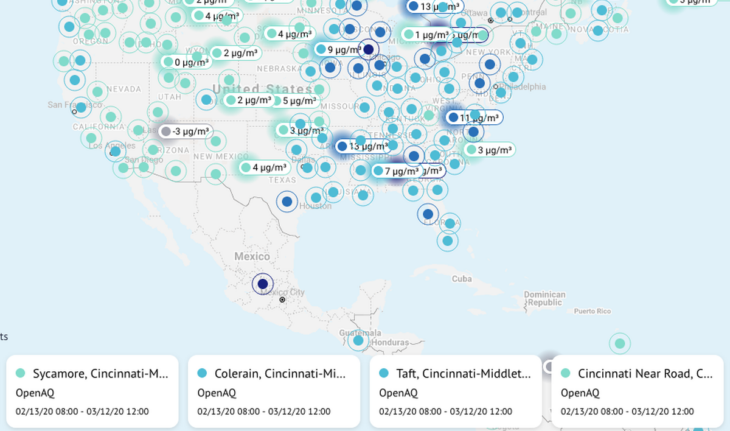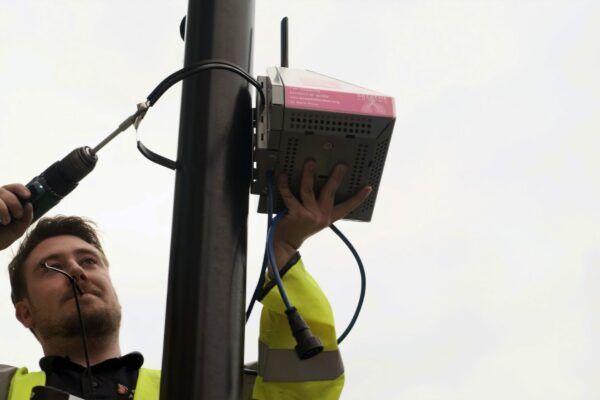The problem
To tackle air pollution, we first need data that tells us how much pollution there is and where it’s coming from. Air quality sensors can record the concentrations of air pollution at street-level. But the technology is often expensive and requires technical know-how to implement. This puts it beyond the reach of most communities, especially the most disadvantaged communities who are more likely to be exposed to the highest levels of air pollution.
Without access to air quality data, these communities and the policymakers who serve them don’t have a clear picture of the health impacts of dirty air.
The solution
Enabling communities to collect local air quality data is the first step to understanding the problems they face. HabitatMap created an air quality sensor that’s affordable, wearable and easy-to-use. What started as a group of dedicated activists in Brooklyn, USA is now the non-profit behind one of the largest open-source databases of air quality measurements in the world.
Their flagship product is a low-cost, palm-sized air quality instrument called AirBeam. It measures local concentrations of air pollution particles (known as particulate matter), humidity and temperature. HabitatMap offers free AirBeams to environmental justice organisations. They focus on low-income communities and communities of colour. AirBeam sensors:
They focus on low-income communities and communities of colour. AirBeam sensors:
- collect hyperlocal air quality measurements
- fill data gaps in monitoring density and hard-to-reach locations
- personalise the impacts of air pollution
- enable widespread citizen-science campaigns
The air quality measurements appear on an open-source platform called AirCasting. This free platform visualises and maps the levels of air pollution that people breathe. It was designed especially for environmental justice campaigners. There is also a toolkit on how to execute a clean air campaign, designed for schools, communities and libraries.

The impact
HabitatMap’s low-cost tools remove the barriers of cost and technical complexity for communities. Hundreds of campaign groups have collected air quality data using AirBeam sensors. These groups have used this data as important evidence to call for equity and a better quality of life in their local areas. The AirCasting platform has been instrumental in educating thousands of students on environmental pollution.
Researchers, municipalities and regulatory agencies use HabitatMap’s technology to make decisions in real-time and craft data-informed policy. Individuals can learn about their personal exposure to air pollution and take steps to limit their exposure.
The most disadvantaged communities who live in highly polluted areas often don’t have access to air quality data. HabitatMap’s low-cost tools enable communities to learn about their exposure to air pollution and use this evidence to campaign for clean air. We hope to catalyse a surge in local groups across the world wielding accurate data to win clean air campaigns.”
Michael Heimbinder, Founder & Executive Director of HabitatMap
Looking forward, HabitatMap envisions an increased demand for clean air as a result of successful citizen science campaigns that have used their tools. The non-profit aims to enable more people, especially those from disadvantaged communities, to use their tools to campaign for clean air initiatives. The data collected on personal exposure to air pollution could also advance research into the health impacts of air pollution.
Wearables, such as the AirBeam air quality sensor, are revolutionising citizens’ access to data on air pollution. These sensors are increasingly accessible through community based organizations and libraries in response to the public’s growing desire to monitor their personal environment. By the end of next year, based on trends we are seeing at SciStarter and Arizona State University, we anticipate that between 500 and 1,000 libraries across the country will loan wearables and provide additional resources to support public participation in scientific research.
Darlene Cavaliar, Founder of SciStarter and AirBeam user

